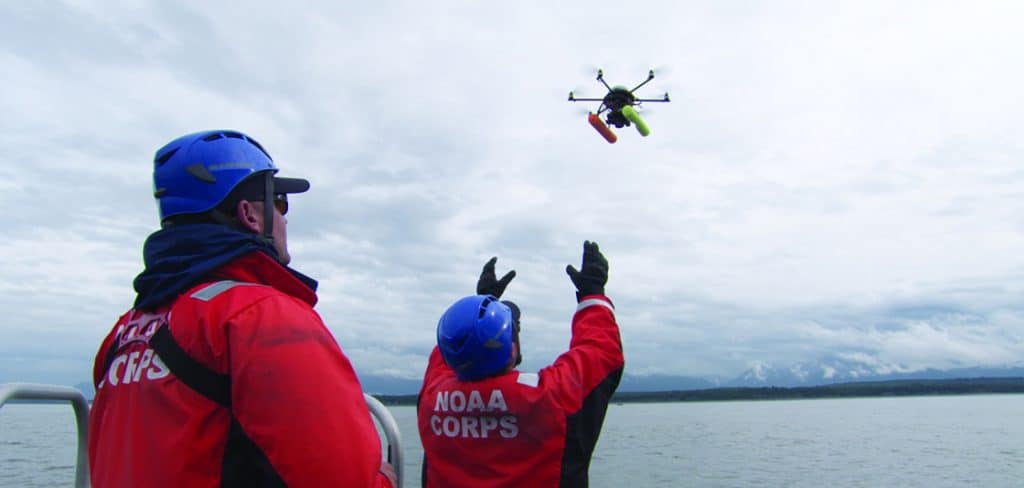NOAA establishes Unmanned Systems Operations Program to support growing use of UxS across agency
March 31, 2020 | AUVSI News

To support the growing use of unmanned systems across the agency, the National Oceanic and Atmospheric Administration (NOAA) is establishing a new Unmanned Systems Operations Program.
According to NOAA, the program will support the “safe, efficient and economical operation” of unmanned systems (UxS) that it uses to collect high-quality environmental data for its science, products and services.
“Unmanned airborne and maritime systems are transforming how we conduct earth science at NOAA,” says retired Navy Rear Adm. Timothy Gallaudet, Ph.D., deputy NOAA administrator.
“Our new Unmanned Systems Operations Program will help us dramatically increase the application and use of these technologies in every NOAA mission area.”
NOAA currently uses unmanned systems for a variety of tasks, including but not limited to, seafloor and habitat mapping, ocean exploration and emergency response. The agency notes that its scientists have been experimenting with and using unmanned systems for decades, but there has been an increase in the use of this technology as a force multiplier for many NOAA programs as a result of the recent surge in availability of these systems. Since 2012, NOAA’s use of small UAS for science missions has increased more than tenfold.
The Unmanned Systems Operations Program is being established within NOAA’s Office of Marine and Aviation Operations (OMAO). Responsible for operating, managing and maintaining the agency’s fleet of ships and aircraft, OMAO also oversees NOAA’s diving and small boat safety programs. Services to be offered under the program will include training, cybersecurity, acquisition and other expert support to ensure safe, cost-effective operations across the agency.
“With the creation of this new program, we will be better positioned to transition these technologies into operational platforms that will gather critical environmental data every American relies upon,” says Rear Adm. Michael J. Silah, director of the NOAA Commissioned Officer Corps and OMAO.
The new program will be housed at two locations. The NOAA Aircraft Operations Center in Lakeland, Florida will continue to support the agency’s UAS activities, while unmanned maritime systems activities will be supported at a new facility being built by the Mississippi State Port Authority in partnership with the University of Southern Mississippi in Gulfport, Mississippi.
In Fiscal Year 2020, NOAA received $12.7 million from Congress to improve and expand UxS operations across the agency, which includes the creation of this new program. NOAA says that the establishment of this program will also help meet the objectives of the Commercial Engagement Through Ocean Technology Act of 2018, which requires NOAA to coordinate research, assess and acquire unmanned marine systems with the U.S. Navy, other federal agencies, industry and academia.
Through the Advanced Naval Technology Exercise (ANTX) program, NOAA and the Navy will collaborate to evaluate new UxS technologies for ocean science applications. Through ANTX, scientists and engineers can participate in the testing and assessment of experimental technologies that can support missions of both agencies. Dozens of new systems are tested and demonstrated during the exercise to help inform government and private sector investment decisions.
- Industry News


